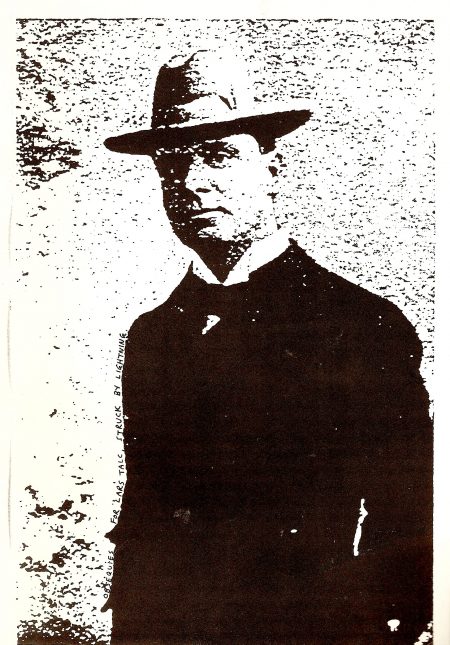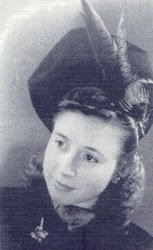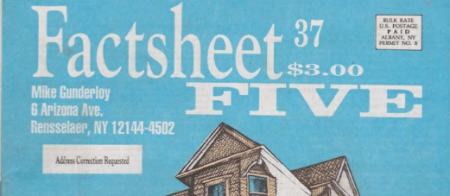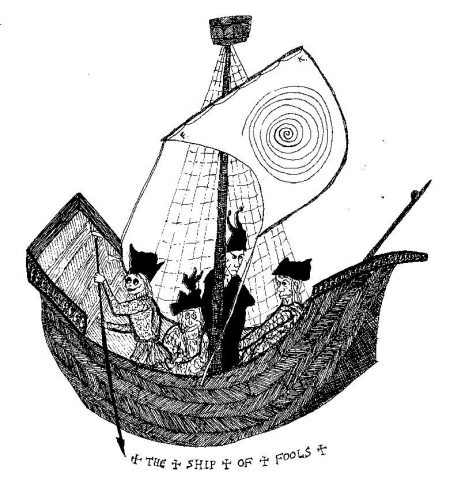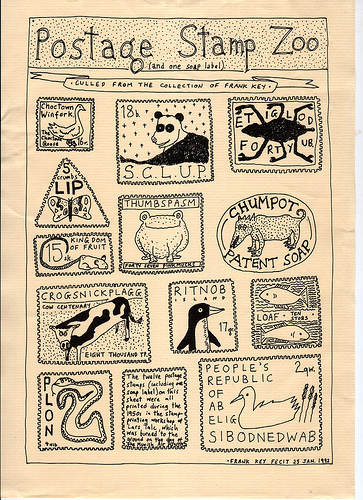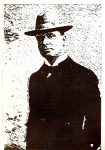
The undertaker was a retired football referee named Aloysius Batlip, who doubled as a fishmonger. Unable to afford the rent for separate premises, he ran both his businesses from a single property in the town’s commercial district. He collected the body of Lars Talc before rigor mortis had set in, and deposited it on a counter at the back of his shop, where it jostled for space with a recent catch of herring, a dozen bream, a punnet of blubber, knives, boning-implements, wicker baskets filled with fishbones, and a platter of sturgeon’s innards.
During the following hour, there were eight visitors to Batlip’s emporium.
1. Dr Hoist, Lars Talc’s general practitioner. Precise details of Finnish health care provision at the time of these events are beyond the compass of the present work, which in some ways is a pity, as it would make for fascinating reading. Dr Hoist’s surgery was two minutes’ walk from the funeral parlour, which itself stood just a few yards from the spot where Talc had fallen. Batlip, who had witnessed the tragedy, had himself trundled the corpse into his shop, in a fish-barrow. A passing ingrate was sent speeding to Dr Hoist, who came at once.
Medical implementa deployed, Dr Hoist pronounced his patient dead. Batlip covered the body with sailcloth, and suggested a prayer.
“He was not a religious man,” said the doctor, gagging on the overpowering stink of fish.
“But I am,” replied the undertaker, and he mumbled a few words of spiritual consolation.
“I have an urgent case of the dropsy to attend to,” said Dr Hoist, hurrying away, “I will send you the necessary papers tomorrow.”
2. Thing Linnet, an employee of the post office and passing acquaintance of Talc, who had also witnessed his death. He entered the shop as Dr Hoist left. A Papist, he unleashed from a roomy pocket in his tunic a set of antique wooden rosary beads, and proceeded to bray hectically over the body. Batlip, whose faith was more gritty, muscular, and northern, and who feared that such a racket could deter his piscine customers, pleaded with Linnet to desist. Eyes lambent with tears, Linnet apologised, but explained that he was grief-stricken and inconsolable.
“You are acting like an Italian widow, sir,” said the fishmonger, “Did you know the man well?”
“Heaven forfend!” screeched Linnet, “Do you not know who you have here?” He lifted the sailcloth. “This is Professor Lars Talc!”
Batlip had defective vision and an unsympathetic optician. He handled so many cadavers, he had not thought to examine this one closely. Now that he learned the identity of his charge, he was distraught.
“One of the finest minds in all Finland!” he exclaimed.
“Now perhaps you are sensible of my woe,” said Linnet.
Before Batlip could reply, his fishmongery assistant called him to the front of the shop, where the third visitor had appeared.
3. Guesbaldo O’Shaughnessy, restaurateur and one of Batlip’s most valued customers. He called daily, and enjoyed discussing his gastronomic schemes with the shopkeeper.
“Dear friend!” he said, planting a trio of kisses on the fishmonger’s moonlike cheeks, “Tonight I intend to lay on a fine meal. The Papal Nuncio has reserved four tables. Imagine! I will make a fine trout pie. First I will remove the skin and bone from a half dozen medium size trout, and cut them into small pieces. Then I will put the pieces, together with a teacupful of bland sauce, four hard-boiled eggs, a teaspoonful of chopped pignut, pepper, salt, and trimmings into a mighty iron basin, mix the lot up and place it into a thawed pastry-case. I will wet the edges with goats’ milk, fold the pastry up like an envelope, brush the top with goo, put it on to a greased tin, and bake it in my piping hot oven until the pie is virtually black. Over the top I will pour syrup of herring. Oh my pal, is your mouth watering as mine is?”
It was not.
4. Slops Curbin, a member of the Electro-Magnetic Apparatus Museum Committee, who lived but a street away. He arrived some minutes after Batlip had managed to bundle O’Shaughnessy out of the shop, thrusting a parcel of trout under his arm. Curbin came merely to gloat and did not stay long.
5. Poor Minnie. She had been alerted by Linnet. She swept through into the funeral parlour. Batlip made room for her, sweeping buckets of jelly, mackerel-heads, steamed mullet, and tench-buns out of the way.
“I would stay with you, but I must prepare the Chapel of Rest,” he said.
Minnie was silent. She sat by Talc’s body, scribbling notes into her commonplace book, chewing the end of her pencil each time she paused, briefly, for thought. Did she write a valediction to Talc, a torrent of memories, fire, and longing? Ah, that would not be Minnie. No, she sat by the corpse of the man with whom she had shared her life, and, in her crabbed hand, wrote about chemical barometer remedies, adulterations of cocoa, eye washes, the time for hanging chickens, the uses of sulphuric ether, stamped documents, the distance of the visible horizon, furniture for invalids, how to render linen bags incombustible, mange in dogs, irritating vegetable poisons, the return of liveries by dismissed servants, and the gutting of widgeons.
6. Battista Ritnob, a journalist. Ritnob had bumped into Dr Hoist near the tram-stop, and had been apprised of Talc’s death. She arrived, panting, pumped Batlip and his assistant for details, was granted a cursory sight of the corpse, and scooted back to her office to file a stop press report.
“Professor Lars Talc, the great Finnish polymath, was struck by lightning and killed this morning. He was ninety-four. Witnesses stated that Talc was walking along the Avenue Ack on his way to an important meeting when a bolt of lightning struck him down. A full obituary will appear in later editions.”
7. Flail Plon, an aeronautical engineer. He called into the shop to buy a brace of lampreys.
8. Chodd. His behaviour was extraordinary, given that he held Talc in contempt. Chodd had fallen on hard times, his position as ill-paid henchman of the Museum Committee belying the fact that he had once, oh, long ago, had a glittering career as a bassoonist in Java. That island’s finest composers had written works especially for him. One thinks of Gribgab’s Wheelchair Variations, Dweb’s Three Winter Turnips, and, inevitably, The Filthiest Of The Churns, that clamorous masterpiece by Lug.
It had all gone horribly wrong following a mysterious incident at the Annual Javan Bassoonists’ Picnic in the summer of the Lug première. The truth of what happened at the duckpond has never come to light, the facts hidden in mouldering police files. But Chodd’s career was effectively over, and, as the decades passed, he became ever more embittered.
It rankled him to see a man like Talc, whom he considered a mere dilettante, held in such high esteem. Chodd’s loathing of Talc stemmed from a radio broadcast given by the latter, in which he disparaged bassoonists – particularly those from Java, Sumatra, and Borneo – as “mewling guttersnipes”. The words were intemperate, the opinion indefensible, but music had long been considered as Talc’s glaring weakness: his views were universally ridiculed, and his own works – primarily the one hundred and fourteen pieces in the songbook – passed over in embarrassed silence by the musical community, except in tone-deaf England, which held Talc’s songs in curious regard. But Chodd never forgave him, and when, by chance, the two were brought together by the Electro-Magnetic Apparatus Museum Committee, the ex-bassoonist relished every opportunity to scorn Talc to his face.
All the more remarkable, then, the vision of Chodd stamping into the funeral parlour in his tin boots, laying a bouquet of delphiniums on the sailcloth shroud, muttering consolatory nothings at the heedless, scribbling Minnie, and, joining Batlip in the Chapel of Rest, offering what help he could.
Working silently, the two men emptied out barrels of whelks, mussels, and crayfish into an iron bath, which they shoved into a corner and covered with an old curtain. Chodd removed oozing tubs of sprat-oil from the shelves and stacked them away in a cupboard. Batlip bundled his knives, axes, slicers, choppers, hooks, spikes, whittles, scissors, razors, cutters, and cleavers into a canvas sack which he lowered into the cellar. Between them, they managed to hose down the slab. Chodd gathered handfuls of vegetation from the small plot at the back of the shop, and decked the room with them, while Batlip nailed a few fish-crates together into a coffin shape and placed it next to the slab, ready to receive Talc’s carcase.



